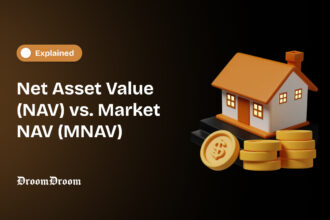At the heart of blockchain’s transformative potential is a thorny issue of scalability. That is the issue of how to accommodate this huge volume of transactions without compromising the network’s integrity or bottom line.
- What Exactly Are Optimistic Rollups?
- Strengths of Optimistic Rollups
- Challenges of Optimistic Rollups
- What’s New in Optimistic Rollups?
- What Are ZK Rollups?
- Key Components of ZK Rollups
- Validity Proofs—The Cryptographic Shield
- Batching and Compression—More Transactions, Less Data
- Ethereum Anchors (On-Chain Smart Contracts)
- Off-Chain Powerhouse: Execution Beyond the EVM
- Strengths of ZK Rollups
- Challenges Facing ZK Rollups
- Recent Developments in ZK Rollups
- Optimistic Rollups vs ZK Rollups: A Battle of Blockchain Titans
- Final Thoughts on ZK Rollups and Optimistic Rollups Comparison
In the debate of Optimistic Rollups vs ZK Rollups this challenge is particularly relevant to Ethereum. Which is the go-to ledger for decentralized applications as it struggles under the weight of heightened demand.
Isn’t it ironic that a technology revered for its potential to democratize finance has risks such as high gas fees and prolonged transaction times?
Can we preserve this system’s hallmark traits which are immutability, security, decentralization? All whilst taking it to the mass level it was built to support.
Here is where the Layer 2 solutions come in. Also known as, a suite of strategies designed to offload pressure from the Ethereum mainchain promising relief for users and developers alike.
Within this context, two standout innovations have captured our attention! Optimistic Rollups and Zero-Knowledge Rollups (ZK Rollups). Each bears the torch of scalability but illuminates a distinct path forward.
Optimistic Rollups hinge on a principle of trust initially treating transactions as valid. It’s a strategy that expedites processes but isn’t without its errors. Zero-knowledge rollups take a more meticulous stance. With cryptographic proofs undergirding transaction validity, they place a premium on security at the expense of increased computational complexity.
In evaluating Optimistic Rollups vs ZK Rollups one must weigh their respective virtues and trade-offs. Their speed, their resource demands and how recent advancements mitigate previous limitations. We’ll dissect these innovations in this article and provide a comprehensive zk rollups and optimistic rollups comparison.
What Exactly Are Optimistic Rollups?
Optimistic Rollups operate on a simple premise that they assume transactions are valid by default unless proven otherwise. That’s all. This “optimistic” approach lets them process transactions much faster than traditional methods.
Instead of verifying each transaction individually on-chain, Optimistic Rollups bundle them together off-chain and then post a single compressed data batch to the Ethereum mainnet. This reduces the data load, slashing gas fees and speeding up transactions.
But how do they ensure security? Of course, fraud proofs. While transactions are initially assumed to be valid, a dispute window is opened which allows anyone to challenge a potentially fraudulent transaction.
If a fraud is proven, the Rollup protocol re-executes the transaction to correct the state and penalizes the dishonest party. This mechanism keeps the blockchain’s integrity intact even as the heavy lifting happens off-chain.
Optimistic Rollups, in essence, strike a delicate balance. They nurture transactional velocity and cost-efficiency by sidestepping individual on-chain validation, without straying from the trustless ethos of blockchain.
Core Components of Optimistic Rollups
To truly understand Optimistic Rollups, we need to look under the hood at their key components.
- Transaction Orchestrators (Sequencers): These are the conductors of the Rollup orchestra, ordering transactions and bundling them into neat batches. Their decisions on transaction order directly impact the final state of the blockchain.
- Fraud Proofs: Fraud proofs are the backbone of Optimistic Rollup security. If a suspicious transaction is spotted, a fraud-proof can be submitted. The system then verifies the claim, and if the claim is valid reverses the transaction and penalizes the bad actor.
- Challenge Period: This is the window during which anyone can contest transactions. However, this waiting period also introduces a delay before transactions are considered final which can be a pain point for some users.
- Ethereum’s Gatekeepers: Rollup Contracts on the Ethereum mainnet manage the Rollup’s interaction with the base layer. They store the Rollup’s state, handle deposits and withdrawals and oversee the execution of fraud proofs.
Strengths of Optimistic Rollups
Optimistic Rollups have several key advantages that make them a strong contender for scaling Ethereum. Some of them are enlisted below.
- Cutting Costs, Not Corners: By moving most of the processing off-chain, Optimistic Rollups dramatically lower gas fees and make the transactions more affordable for users and developers alike.
- No Need to Rebuild the Wheel: Their compatibility with the Ethereum Virtual Machine (EVM) means that existing Ethereum dApps can easily migrate to an Optimistic Rollup without having to rewrite code. Hence, speeding up the adoption.
- Built for Scale: With the ability to process thousands of transactions per second, Optimistic Rollups can handle the increasing demands of Ethereum’s growing user base.
Challenges of Optimistic Rollups
However, it’s not all smooth sailing. Here are some of the hurdles Optimistic Rollups face.
- The Waiting Game: The challenge period means users must wait several days before their transactions are finalized. This can be seen as a downside for those needing quick results.
- Trusting the Crowd: The system relies on a network of honest participants to monitor and challenge fraudulent transactions. If no one steps up, a bad transaction could slip through.
- Complex Security Checks: The fraud proof mechanism is complex and resource-intensive, which could limit the scalability of Optimistic Rollups in practice.
What’s New in Optimistic Rollups?
Leading projects like Arbitrum and Optimism are setting the pace.
Arbitrum has introduced multi-round fraud proofs, which break down the process into smaller and more manageable parts. Thus, speeding up dispute resolution and reducing the burden on validators.
Optimism has streamlined the developer experience, making it easier to migrate dApps to their Rollup. Recent updates have also shortened the challenge period which ultimately helps to reduce the delay before transactions are finalized.
Both projects are expanding their ecosystems through strategic partnerships and integrations.
For example, Arbitrum has integrated with major DeFi platforms such as Uniswap and SushiSwap. Both these partnerships have driven substantial user growth and liquidity.
- As of January 2024, Arbitrum has amassed over $5.7 billion in Total Value Locked (TVL), reflecting its dominance in the Layer 2 space.
Similarly, Optimism has partnered with prominent projects like Synthetix and Aave, which has contributed to its rapid adoption.
- By mid-2024, Optimism’s ecosystem supports over $571 million in TVL, making it one of the leading solutions for scaling Ethereum. How cool!
What Are ZK Rollups?

The demand for scalable solutions that don’t compromise on security or decentralization is intensifying. Zero-Knowledge Rollups (ZK Rollups) have emerged as one of the most promising answers to this challenge.
ZK Rollups deliver high throughput, lower costs and enhanced privacy. All whilst maintaining the integrity of the underlying blockchain. Let’s explore how ZK Rollups achieve this remarkable balance.
ZK Rollups operates by bundling multiple transactions off-chain and submitting a single, compact proof to the Ethereum blockchain that verifies the validity of all those transactions.
The magic lies in Zero-Knowledge Proofs (ZKPs). These are a kind of cryptographic methods that allow one party to prove to another that a statement is true without revealing any additional information. In the case of ZK Rollups, these proofs are known as validity proofs.
Unlike Optimistic Rollups, where transactions are assumed valid until proven otherwise. ZK Rollups require each batch of transactions to be accompanied by a validity proof before it’s accepted by the Ethereum network.
Do you know what this means? That fraudulent transaction simply can’t get through the validity proof would fail and the batch would be rejected.
Key Components of ZK Rollups
We need to look at the key components that make cryptographic proofs work, so shall we?
Validity Proofs—The Cryptographic Shield
At the core of ZK Rollups are validity proofs, which ensure that every transaction in a batch is accurate and that the resulting state changes on the blockchain are legitimate.
Common types of validity proofs include ZK-SNARKs and ZK-STARKs, each offering different benefits in terms of efficiency and scalability.
Batching and Compression—More Transactions, Less Data
ZK Rollups batch multiple transactions together and compress the data before submitting it to the Ethereum mainnet. This not only reduces the amount of data stored on-chain but also slashes gas fees and boosts transaction throughput.
Ethereum Anchors (On-Chain Smart Contracts)
Like Optimistic Rollups, ZK Rollups rely on smart contracts deployed on the Ethereum mainnet. These contracts manage the Rollup’s state, handle deposits and withdrawals and verify validity proofs. They ensure the secure interaction between the off-chain Rollup environment and Ethereum’s base layer.
Off-Chain Powerhouse: Execution Beyond the EVM
The actual execution of transactions occurs off-chain, in a dedicated environment separate from the Ethereum Virtual Machine (EVM). This allows ZK Rollups to perform complex computations more efficiently. Hence, freeing Ethereum’s network from heavy lifting.
Strengths of ZK Rollups
ZK Rollups bring several powerful advantages to the table, making them a compelling choice for scaling blockchain networks.
- Finality in a Flash: One of the standout features of ZK Rollups is the instant transaction finality they provide. Once a validity proof is verified then the associated transactions are immediately considered final. This is a stark contrast to Optimistic Rollups where users must wait for the challenge period to expire.
- Security You Can Trust: The cryptographic rigor of ZK Rollups ensures that transactions are either valid or they’re not included in the batch. There is no middle ground. This model doesn’t rely on honest actors to challenge transactions, which reduces the risk of fraud.
- Quick Withdrawals & Low Latency: Since, you know, there’s no need for a challenge period, users can withdraw their funds from a ZK Rollup almost immediately. This makes them ideal for applications that require quick access to funds.
- Privacy with Precision: Zero-Knowledge Proofs offer inherent privacy benefits as they allow transactions to be verified without exposing the details. This incredibly makes ZK Rollups particularly valuable for use cases where confidentiality is critical.
Challenges Facing ZK Rollups
Despite their impressive benefits, ZK Rollups aren’t without their challenges.
- The Cost of Complexity: Generating and verifying Zero-Knowledge Proofs like ZK-SNARKs and ZK-STARKs requires large amount computational resources. This as you can imagine, can lead to higher costs for users and therefore limiting the scalability of ZK Rollups in certain scenarios.
- A Steep Learning Curve: ZK Rollups are more complex to implement than Optimistic Rollups and often require specialized hardware and deep cryptographic expertise. This complexity can be a barrier to adoption for many developers.
- Compatibility Concerns: While some ZK Rollups are compatible with the Ethereum Virtual Machine, others aren’t. This makes it difficult for existing dApps to migrate to a ZK Rollup without modifications to existing protocols. This can also limit the flexibility and adoption of ZK Rollups.
Recent Developments in ZK Rollups
The ZK Rollup space is increasingly growing with projects making major strides in adoption and technology. Let’s look at some key players.
- zkSync: Developed by Matter Labs, zkSync is at the forefront of ZK Rollup innovation. ZkSync makes it easier for developers to port their existing Ethereum applications to a ZK Rollup by focusing on full EVM compatibility,
- StarkNet: Built on ZK-STARKs, StarkNet is pushing the boundaries of what ZK Rollups can achieve. Its unique approach to validity proofs allows it to scale without compromising the decentralized nature of blockchain.
- Polygon zkEVM: Another major player is Polygon zkEVM, which aims to provide a ZK Rollup fully compatible with Ethereum’s EVM. Numerous dApps have migrated to Polygon zkEVM because of due to its lower costs and higher throughput.
Optimistic Rollups vs ZK Rollups: A Battle of Blockchain Titans
With a solid understanding of Optimistic Rollups and ZK Rollups, it’s time to pit these two heavyweights against each other.
This comparative analysis will talk about their performance, cost efficiency, security models, adoption and the challenges each faces. Whether you’re building the next big dApp or investing in blockchain infrastructure, understanding these differences is crucial to making the right choice.
ZK Rollups and Optimistic Rollups Comparison
| Aspect | Optimistic Rollups | ZK Rollups |
| Transaction Speed & Finality | High throughput (thousands of TPS) but delayed finality due to a dispute period. | Near-instant finality once a validity proof is verified. |
| Cost Efficiency | Cost-efficient with lower gas fees, but costs can spike if fraud proofs are required. | Higher computational costs due to proof generation and verification, but compresses transaction data for cost savings. |
| Security Model | Assumes transactions are valid until challenged, depends on vigilant participants. | Requires cryptographic validity proofs for each transaction batch, inherently more secure. |
| Adoption & Use Cases | Widely adopted in DeFi with projects like Arbitrum and Optimism, EVM-compatible. | Gaining ground in high-security and privacy-focused applications with projects like zkSync and StarkNet. |
| Challenges | Delays in transaction finality and dependency on network participants for security. | High computational costs and complexity in implementation and adoption. |
| Future Prospects | Likely to remain dominant in cost-sensitive applications, with ongoing improvements in dispute handling. | Expected to expand adoption as cryptographic advancements reduce costs and simplify implementation. |
The Ultimate Rollup Decision
The analysis reveals that Optimistic Rollups and ZK Rollups each excel in different areas, making them suitable for distinct blockchain applications. If your project prioritizes cost efficiency and seamless integration with existing Ethereum dApps, Optimistic Rollups are a solid choice. On the other hand, if security and instant transaction finality are critical then ZK Rollups offer unmatched advantages.
Final Thoughts on ZK Rollups and Optimistic Rollups Comparison
Both Optimistic Rollups and ZK Rollups are poised to play critical roles in scaling blockchain networks and enabling the next generation of decentralized applications. In the Optimistic Rollups vs ZK Rollups debate, it’s clear that rollups are not just a temporary solution but they are likely to become a standard layer in blockchain architecture. A part of the architecture which will equip developers to handle the widespread adoption of decentralized technologies and unlocking new possibilities for innovation.
As Ethereum 2.0 and other blockchain innovations come online, rollups will be crucial in shaping the future of decentralized systems. Rollups also help in democratizing blockchain access and transforming the economic space of decentralized finance and beyond.
The race between Optimistic Rollups vs ZK Rollups is far from over. Both technologies will likely coexist with each carving out its niche in the broader blockchain ecosystem. The choice between them will ultimately depend on the specific needs of the application, the trade-offs developers are willing to make and the continuing innovation of the underlying mechanisms.




















